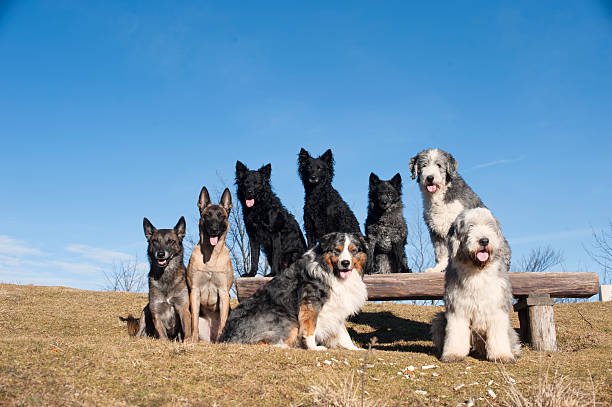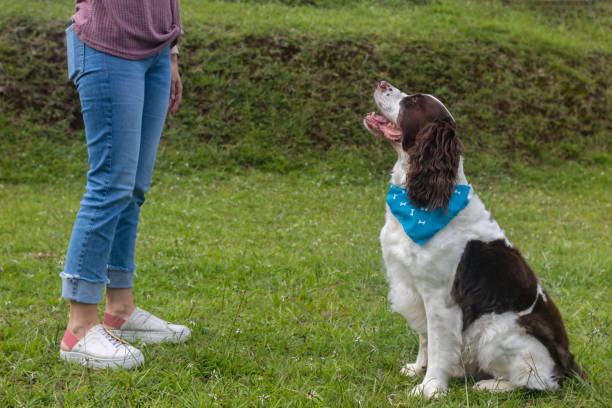A large number of individuals frequently face the problem of noisy dogs.
Whether it’s a yappy terrier, a howling hound, or any noise-making pooch, there are ways to quiet the barking. You can try teaching the dog commands such as “quiet” and “no bark,” put them on a “bark collar” that emits an unpleasant sound when they do bark or even teach them tricks to keep their mind busy so they have less time to think about barking.
Getting Ready for a Quiet
When you are ready to train your dog, gather the following items: treats, a clicker if desired (but not required), and a “bark collar” that fits snugly around your dog’s neck. If you have an electronic bark collar, make sure it is fully charged before starting.


1. Teach the Command “Quiet”
To train your dog to be quiet, you must first teach them that “quiet” means not barking. Take a treat in one hand and hold it near your dog’s nose. At the same time, use your other hand to stroke your dog’s throat gently. The combination of the treat, the petting to the throat, and your verbal cue “quiet” will help your dog associate being quiet with getting a treat.
Once your dog has calmed down and is no longer barking or growling, reward him by giving him the treat. Repeat this sequence as many times as necessary for both you and your dog to be successful.
2. Use a Clicker to Train
Another way for your dog to understand that “quiet” means not barking is to use a clicker. A clicker is an inexpensive toy that makes the same sound as a camera flash when you press down on it. The sound of this indicates that if they don’t make any noise, they will get a treat.
Hold the clicker in one hand and a treat in the other. When your dog is quiet, please give them the treat from your other hand along with a clicker sound to indicate they did something good. Repeat this until your dog starts anticipating the reward as soon as you start giving out the clicks instead of waiting for you to place the treat in their mouth.


3. Watch Your Dog’s Response
While you are training your dog, be sure to observe their reaction. If they seem startled by the sound of a bark collar or the clicker, stop using that method and try another one instead. You also need to know if your dog gets tired or frustrated and will not comply with the training. In this case, you are better off punishing them instead of just trying to get them to interact anymore.
4. Teaching Your Dog Tricks
Some dogs respond well to trick training that is made especially for dogs who like to bark. This type of training takes some time and patience, but it can help keep your dog’s mind busy, so they don’t have time to think about barking.
A good trick is to teach them how to play dead. To do this, begin by asking your dog to lie down on the floor. When their head is on the ground, say “bang” and give them a treat. Repeat this process until your dog knows what to do when they hear that word.
Then, have them sit up and hold their head high while saying “bang,” and reward them. Be sure to repeat this step until it becomes natural for both of you. The next step is to add the motion of them falling back down on the floor and laying their head on the ground. You may need to place your hands on them to ensure they are lying in the right position before you say “bang.”
In addition, try teaching your dogs other tricks such as shaking hands or playing dead while standing up. You will have a harder time training this trick, but the result is well worth it. It will teach your dog how to think and be creative instead of just barking constantly.


5. Train Your Dog With a Bark Collar
Some dogs bark when other dogs are barking or making noise in general around them. To stop this type of behaviour, you may need to use a bark collar. Bark collars are most effective if your dog is not already used to wearing one.
It is also important that the bark collar fits snugly around your dog’s neck without being too tight. A proper fit helps ensure it does not fall off or become a distraction during training time. If you have an electronic bark collar, make sure it is set to the appropriate level for your dog’s comfort.
If you are going to train with a bark collar, be sure that you and your dog are both ready and able to work through this process. Sometimes bark collars don’t work correctly because they are not fitted properly, or your dog might hate wearing them. If this is the case, consider using another training technique such as a treat or toy instead.
6. Teaching “Quiet” and “No Bark”
Another way to train your dog not to bark is by teaching them commands such as “quiet” and “no bark.” While you are training this command, you must praise them every time they are quiet. You can use a treat to coax them into staying quiet, but be patient and know that this method will take some time.
While it may seem like the best way to stop barking is by punishing your dog each time they bark, you should never punish your dog after the fact. With any training, it is important to reward them while you are actively training.


7. Reward Your Dog’s Good Behaviour
If your dog is barking in the backyard, for example, and you want them to stop, try rewarding them before they start barking and then again after they stop. By teaching them this type of routine, they will understand what good behaviour is rewarded.
When they are barking at an intruder, reward them by taking them back inside the house. By doing this, you show your dog that you want them to come into the house when a stranger is around instead of barking and scaring people away. You can also use this technique during training time once it becomes natural for both of you.
8. Teach Your Dog Not to Bark at the Doorbell
If your dog barks every time the doorbell rings, try putting them in a place where they cannot hear it. This may be in another room or behind a closed door. If this does not work, it might be best to put them outside until you answer the door.
You also want to avoid rewarding your dog every time they bark at the doorbell or someone at the door. If you do this, they will only continue to bark because they know they will get a treat for doing it.


Praise Your Dog
Whenever your dog stops barking, praise them with positive words and phrases. It would help to praise your dog each time they are quiet instead of only giving them attention when barking. If you can get their attention away from the door, try teaching them a cool new trick or treat them with something special to eat.


Conclusion
Noisy dogs can be a challenge to train. But with some patience, you’ll find that it’s not impossible. The key is finding the right technique for your dog and ensuring they are properly rewarded during training time.
It may take a bit of trial-and-error before you discover what works best, but once you do, your noisemaking pooch will have learned how to behave more like a well-behaved pup!


